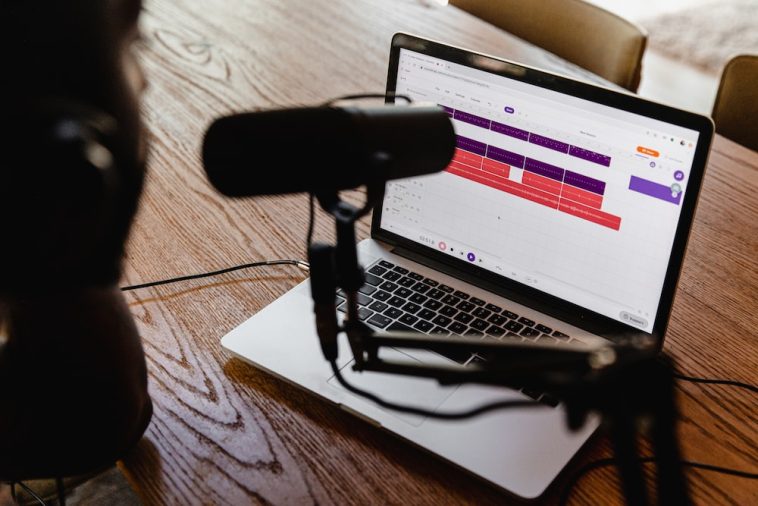Introduction.
Starting a podcast is easier than ever, and now you can do it right from your phone. You don’t need fancy microphones, mixing boards, or a professional studio.
With just a smartphone, a few apps, and a good idea, you can create a podcast that reaches listeners around the world. It’s all about understanding the basics, using the right tools, and getting started with a plan.
In this guide, I’ll walk you through everything you need to know to start your podcast from your phone.
Why Start a Podcast on Your Phone?
There are plenty of reasons to start a podcast from your phone:
- Convenience: You already have your phone with you all the time, so recording on the go is easy.
- Low Cost: No need to invest in expensive recording equipment. Apps and basic gear can be affordable.
- Accessibility: Mobile podcasting apps make it easy to record, edit, and publish without needing a computer.
It’s also a fantastic way to share your interests, connect with others, or even build a small community.
How Do I Start a Podcast From Your Phone?
Step 1: Plan Your Podcast.
Start with a plan. Decide on your topic, audience, and episode format. Ask yourself these questions:
- What’s my podcast about? Pick something specific, like fitness for beginners, daily motivational tips, or true crime stories.
- Who’s my target audience? Think about who you want to reach and how you’ll connect with them.
- How often will I publish? Decide on your frequency—weekly, bi-weekly, or monthly.
A simple outline can help you stay consistent and make sure you always have topics ready to go.
Step 2: Set Up Your Recording Environment.
While you don’t need a professional studio, find a quiet space to record. Background noise is one of the biggest challenges with mobile recordings. A few quick fixes:
- Record in a small, carpeted room to reduce echo.
- Turn off fans or AC to minimize background noise.
- Place a soft cloth or blanket under the phone to muffle any unwanted sound reflections.
Step 3: Choose the Right Recording App.
Several apps are specifically designed for podcasting. Here are some popular ones:
- Anchor: Free, user-friendly, and it lets you record, edit, and distribute your podcast to multiple platforms.
- Podbean: Has basic editing tools and is good for publishing and monetizing your podcast.
- Spreaker: Offers live-streaming features and decent editing tools.
Most apps have free versions, but some might charge for advanced features like sound effects and storage.
Step 4: Invest in a Good Microphone.
While phone microphones can work, a small investment in an external microphone will improve sound quality. Here are a few budget-friendly options:
- Rode SmartLav+: A compact lavalier mic for smartphones.
- Shure MV88: A versatile mic with good sound quality and portability.
- BOYA BY-M1: An affordable option that works well with most devices.
Plug the microphone into your phone, and you’re ready for higher-quality sound.
Step 5: Record Your First Episode.
Once you have your app and microphone set up, hit record. Here are a few tips for recording:
- Speak clearly and avoid rushing. It’s tempting to speed up when you’re recording alone, but take your time.
- Record in segments if that feels easier. Most editing apps let you stitch parts together seamlessly.
- Listen to a playback to catch any issues. Don’t worry about perfection; just focus on being clear and natural.
Step 6: Edit Your Episode.
Most podcast apps have basic editing tools to help you clean up the recording. Here’s what to focus on:
- Cut out long pauses or mistakes to keep the episode flowing smoothly.
- Add intro and outro music if you want a more polished feel. Many apps have built-in music libraries.
- Adjust volume levels to make sure everything sounds balanced.
Even a basic edit can make a big difference in quality.
Step 7: Publish and Distribute.
Once your episode is ready, it’s time to publish. Your app should let you publish directly to platforms like Spotify, Apple Podcasts, and Google Podcasts. Here’s how distribution generally works:
- Choose a podcast title and description that explains what your show is about.
- Pick relevant tags to help listeners find you through search.
- Set up your RSS feed (most apps do this automatically), so your podcast can be accessed across platforms.
Pros and Cons of Starting a Podcast From Your Phone
Pros
- Low cost: No need for expensive equipment.
- Convenience: Record anywhere, anytime.
- Easy publishing: Apps simplify the process of distributing your episodes.
Cons
- Sound quality limitations: Smartphone microphones may not sound as polished as studio mics.
- Limited editing: Mobile apps often have fewer editing options than desktop software.
- Background noise: Phones can pick up more ambient sounds, especially if you’re not in a controlled environment.
FAQ
Q1: Can I start a podcast on my phone without spending any money?
Yes! Apps like Anchor are free and offer everything from recording to distribution. You might want to invest in an external mic eventually, but it’s not a must.
Q2: How long should my podcast episodes be?
It depends on your topic and audience. Many podcasts range from 20 to 60 minutes, but short-form podcasts (5-10 minutes) are popular too. Experiment with lengths to see what works best.
Q3: Can I monetize my podcast if I start on my phone?
Yes, most major podcasting platforms offer monetization options, like sponsorships and listener support. Apps like Podbean and Spreaker have built-in monetization features as well.
Q4: What if I want to add guests? Can I do that on my phone?
Absolutely! Many podcasting apps let you add remote guests. Apps like Anchor have guest features that let you invite someone via link.
Q5: Will I need to upgrade to better equipment later?
Upgrading depends on your goals. If you’re happy with your podcast as-is, you might not need anything else. But if you want professional sound, a better mic and some basic editing tools could be worth considering.
Conclusion
Starting a podcast from your phone is completely doable. You don’t need a big budget or a tech background—just a good idea, a plan, and a bit of consistency.
With the right app, a decent mic, and a quiet space, you can produce episodes that listeners will enjoy. So, are you ready to take that first step and start your podcast journey?





GIPHY App Key not set. Please check settings